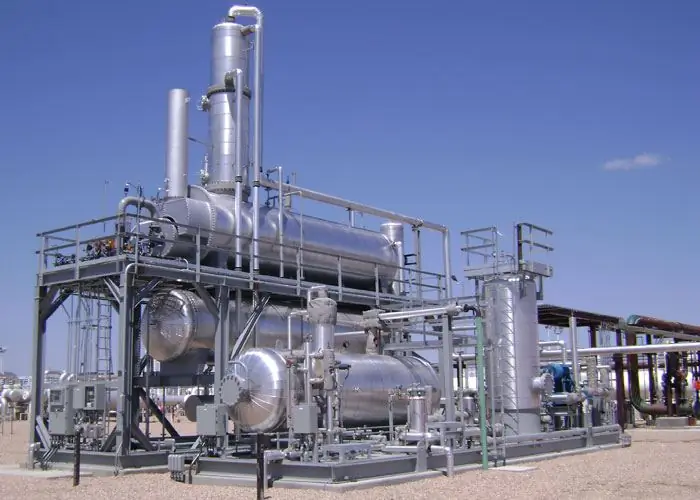2025 Author: Howard Calhoun | [email protected]. Last modified: 2025-01-24 13:10:26
Management Technology consists of a wide range of hardware and software solutions designed to improve the performance of core function managers.
Because technology is adapted to serve management, technology can be described in terms such as communication, planning, monitoring and control. Understanding how technology can improve each feature is key to leveraging it effectively for competitive advantage.
Identification of control technologies
Management technologies are a set of disciplines that enable organizations to manage assets to create competitive advantage. They include various methods for searching and processing information, techniques for effectively influencing an employee, management principles and control systems.

Management systems consist of integrated planning, design, optimization, operation and management of technological products, processes and services.
Types of management technologies
In the modern world, there are different technologies for the management process - management:
- by goals;
- by results;
- based on consumer interests;
- based on staff activation;
- in exceptional situations;
- through checks and instructions;
- based on "artificial intelligence".
Management by Goals
This type involves the creation of a management information system to compare actual results and achievements against predetermined goals. The main advantages of this management technology are to increase the motivation and interest of employees, to ensure better communication between management and employees. Used in small and medium enterprises.

The technology consists of five steps:
- Define or revise company goals.
- Setting tasks and their time frames for employees.
- Encourage employee participation in setting and achieving goals.
- Monitoring the execution process.
- Evaluation and reward.
All company goals must be SMART, i.e. specific, measurable, acceptable, realistic and time bound. In that case, it's more likelysuccessful and timely completion of tasks.
Management by results
Results Based Management is a tool for monitoring and managing the implementation of a strategy. This management technology is an example of a tool used for complete strategic control of the process of achieving goals. Such goals may take the form of physical results, organizational or behavioral changes, workflow changes, or contribute to the achievement of another higher-level goal.

Output information is used for accountability, reporting, communication and feedback in design, resource allocation, project implementation and operations. When developing a management process technology, all employees who are directly or indirectly involved in the project mark their business processes, products and services, showing how they contribute to the achievement of results, and this information is used to determine the appropriate indicators of progress.
This system is mainly used in government and charitable organizations, where purely financial measures are not the key drivers, there are no competitors to compare. Such as the United Nations and the International Committee of the Red Cross. However, the technology has also begun to be used in semi-profit organizations.
Management based on consumer interests
Technology is based on stimulationactions of the consumer through his needs and interests: physiological, security needs, social, spiritual and prestigious. Such management technology should be used in small regions where the activities of the organization directly affect the municipal infrastructure.

Consumer behavior varies according to individual needs and other factors. To understand this influence, researchers are trying to figure out what goes on in the minds of consumers and identify the physical and social external influences on purchasing decisions.
At some levels, consumer choices can seem rather random. However, every decision made makes sense, even if this choice does not always seem rational. Buying decisions are influenced by personal emotions, social situations, goals and values.
Management based on personnel activation
This management technology in the organization is based on stimulating the activities of staff and maximizing the use of its intellectual potential. The technology is used by enterprises of any legal form.
Eight tips for managing your team effectively:
- Keep in touch: Employees want to be aware of current projects, goals and deadlines, so keep them up to date on what's going on in the organization.
- Build positive working relationships: It's important to get to know team members individually, not just professionallylevel, but also on a more personal level.
- Recognize good work: don't be one of the bosses who only gives feedback when something is wrong.
- Be authentic: The team doesn't expect you to be superhuman, so if you're feeling pressured and need help, don't be afraid to admit it.
- Be decisive: A good leader must be able to defend his authority and make important decisions for the team.
- Delegate work to the right people: It's important to build relationships with your team and get to know them individually so you can appreciate their strengths.
- Conflict management: when conflict arises in the workplace, it cannot be ignored.
- Set a Good Example: Staff will seek advice and inspiration, so it's important to set a good example to earn their respect.
Exception management
This technology is based on the distribution of all management and production functions in such a way that employees are fully responsible for their segment of the task without control and management in the process. The project manager only communicates with the external environment and checks the results of the work. This management technology is used in organizations with strict regulations or with a trust (functional) management structure.

First of all, you need to set goals with predictable or intended results. These indicators are evaluated and equatedto actual. Then the deviation is analyzed. With little or no deviation, no action is required and managers can focus on other issues. If the actual figures deviate significantly, the problem should be escalated to managers because "an exception has occurred". The ultimate goal is to understand the situation and resolve this exception immediately.
Management through checks and instructions
Rigid planning of the activities of subordinates and constant control of the head of all current work - management through inspections and instructions. This technology of management decisions is not very popular because of some pressure on employees. In this case, a linear structure is provided. The technology is used in small organizations with high authority and professionalism of the leader, but in most cases only temporarily.
Management based on "artificial intelligence"
This modern management technology is based on information systems and programming. Efforts to advance AI concepts over the past 20 years have resulted in some truly amazing innovations.

How does artificial intelligence work? An artificial neural network tries to simulate the processes of densely interconnected brain cells, but instead of being built from biology, these neurons or nodes are built from code. Management information technologies in this vein are still developing. However, many experts saythat even now we can conclude that such technology is able to improve business processes in the organization. After all, it not only works, but also gives excellent results.
Development of management decisions
Decision-making technology is the mental process of choosing from a variety of alternatives. The development of management decisions includes a series of sequential actions that together structure the work process and facilitate the implementation of tasks. These actions are:
- setting goals;
- prioritization of goals;
- developing selection criteria;
- identifying alternatives;
- assessment of alternatives according to selection criteria;
- choosing the alternative that best fits the criteria;
- implementation of the solution.

Decision making is a fascinating science that includes organizational behavior, psychology, sociology, neuroscience, strategy, management, philosophy and logic. The ability to make effective decisions that are rational, informed, and based on fertile collaboration can greatly improve a company's performance and financial results. Effective decision making is a core skill required for success in the field of management and, in particular, management technologies. This requires the ability to weigh different paths and determine the best course of action.
Recommended:
Management methods in management: description, characteristics and functions

A leadership position requires a huge amount of knowledge, skills and abilities from a person. Most large companies provide induction training, and all of them have the disadvantage that they usually do not teach about management methods. The new boss is forced to learn this on his own or on the side. Ways to manage a team may vary, depending on the functionality performed
Gas drying: definition, characteristics, methods and types of work, application of installation and special equipment

Gas drying is one of the cleaning methods that helps to get rid of moisture inside the pipeline. Its appearance is quite dangerous, as it causes corrosion of the metal. In addition, since mining is also carried out in conditions of low temperatures, ice formation is possible
Coal: classification, types, grades, characteristics, combustion features, extraction sites, application and importance for the economy

Coal is a very diverse and multifaceted compound. Due to its peculiarity of formation in the bowels of the earth, it can have very different characteristics. Therefore, it is customary to classify coal. How this happens is described in this article
Two-component polyurethane sealant: definition, creation, types and types, characteristics, properties and nuances of application

With long-term and high-quality sealing of seams and cracks, polyurethane two-component sealants have found their wide distribution. They have high deformation and elastic properties, therefore, they can be used as butt sealants in the field of repair and housing construction
Event management is the management of the organization of events. Event management and its development in Russia

Event management is a complex of all activities carried out to create mass and corporate events. At the same time, the former are called upon to provide powerful support to advertising companies, while the latter are aimed at strengthening the spirit within corporations

